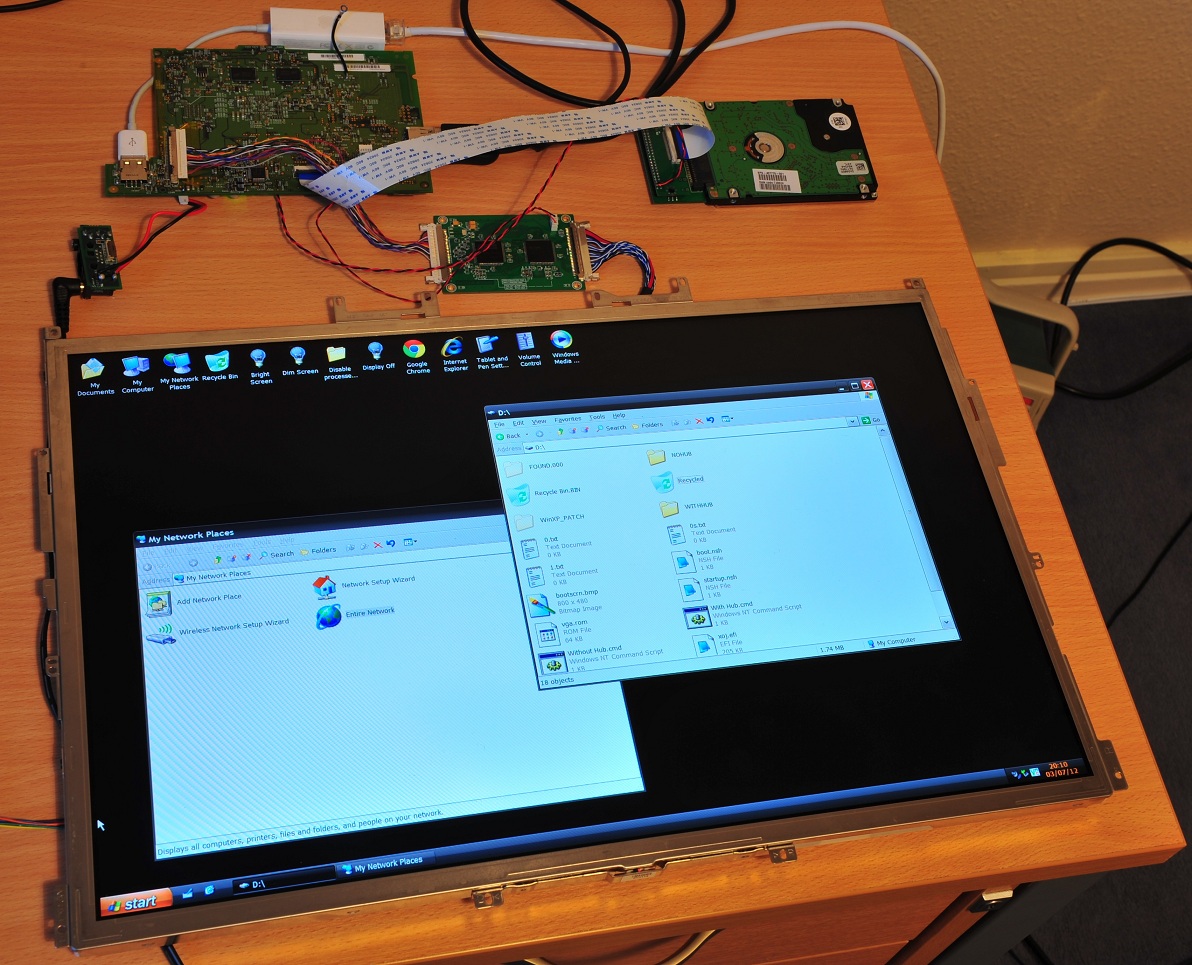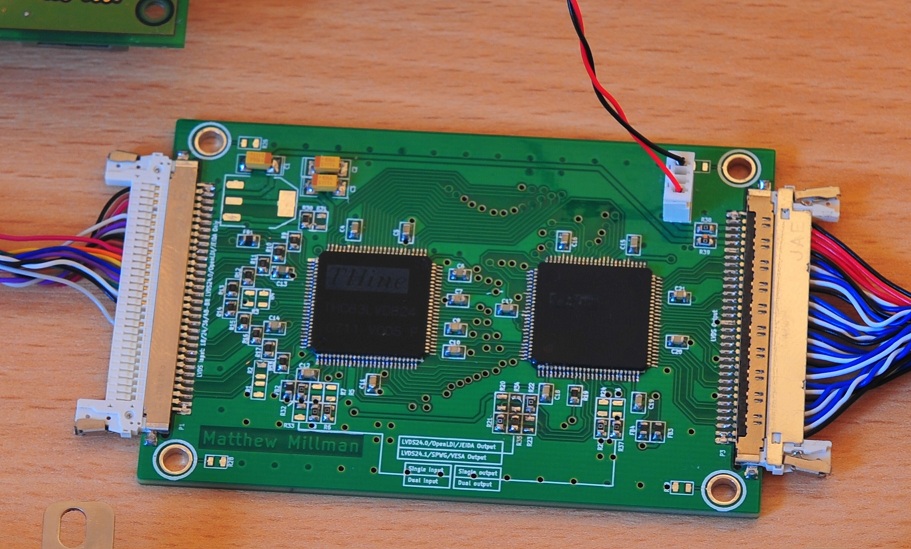Using large LCD panels on the Joggler
Introduction
Because of the Joggler PCB's Small size, Thinness, Low power consumption and ability to run full sized operating systems, I thought it'd make a good basis for a D.I.Y large LCD photo frame. Over the past few weeks I've been experimenting with a few different panels attached to see what would be best for this project.
Panel selection
Unfortunately Poulsbo only has a single channel LVDS output which limits it to panels with a resolution of around 1280x800/1366x768 or less because as soon as panels go above this, they have dual channel inputs. I tried a few panels at around 20" @ 720P from TVs but they were not really sufficient quality.
One very nice screen around this size is used in the behemoth 20.1" Dell XPS M2010 (LP201WE1). Unfortunately with a resolution of 1680x1050 it has a dual channel LVDS input meaning no direct connection to the Joggler is possible. Fortunately the Joggler's LVDS output has a maximum pixel clock of 112MHz, and, by my calculations, assuming I can get around the 'dual channel' problem, it should be able to drive this panel at 56Hz which is plenty for a photo frame (heck, even 40Hz is good)
EDIT: I don't really run it at 112MHz. Apparently running the display at more than triple its design pixel clock (33MHz) doesn't work too well as the Joggler's PCB just isn't routed well enough to handle this, also the stock cables/connectors don't run properly at this speed either. I've had to back it off to 95MHz which is still plenty.
The correct solution for driving big panels?
I know I know - attach a dual channel LVDS transmitter to the SDVO output, except, there isn't one on the Joggler (Unless that's what J1 is?) Not sure...
The direct LVDS approach is less effort either way, even if a little ugly.
The single to dual channel LVDS problem
There is a product made by IEI (LVDS24-01) which I used on this project: Using the Joggler as a VGA/DVI screen It can do single to dual channel LVDS steering but it's limited to 18-bit colour which is fine for almost all LCD panels, which only support an 18-bit colour depth, except LP201WE1 is a rare example of a 24-bit panel. So rare in fact, it is the first 24-bit panel I have ever seen in a laptop (even my top of the line 2011 spec Latitudes are 18-bit!)
Given that this is a photo frame, I'd want all the available colours even if the difference is barely perceptable.
There doesn't seem to be any ready made product to do this which is a bummer because that means I have to build my own.
Fast forward a couple of weeks, and here it is:
Seriously?
Having to build something like this is a bit of a slap in the face, because the LVDS receiver I've used (THC63LVD824) is already contained within the driver chip on the panel, not only that, it's got a pin (MODE1) which sets single or dual channel operation, but apparently LG Philips didn't take the time to bring this out to an external pin on the panel's driver chip, so I've got to duplicate the whole setup on my board just to get access to it! Gah!
Backlight control
One cool thing about LP201WE1 is that it has an SMBus (I2C) dimmable backlight, which could in theory be hooked straight up to the Joggler's SMBus but in practice this is going to be quite a bit of software hacking to turn into a viable solution. Work in progress on that one.
Technical details
Are mostly not written here. A project like this is a 'If you have to ask...' kind of deal. That said, I'd be happy to help anyone out who wants to do something like this. I'm 'inaxeon' on the forums.
The LP201WE1's backlight (NIK06002.60) connector pinout is as follows:
- Its Driver IC (MPS MP1255) uses the SMBus protocol.
- It responds (Write only) to the address 0x2C (0x58 Read, 0x59 Write)
- Write 0x01 to offset 0x0 to power on the backlight
- Write 0xFF to offset 0x1 for full brightness. All brightness levels are listed in the LP201WE1 datasheet in the EDID section at the end.


